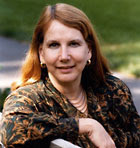Prophet of Innovation: Joseph Schumpeter and Creative Destruction.

Click on the title of this entry to be taken to the Google Book Search page for this book. I was introduced to the writings of Professor Richard N. Langlois, our key research author, through his being awarded the Schumpeter Prize in 2004, for his paper The Dynamics of Industrial Capitalism. I'll admit I have not read the Prophet of Innovation, yet, and even if I had read it, that would not have been the point of the blog entry. Harvard Professor Thomas McCraw has participated in two PodCasts in the past few months. His promotion of his book brings up a number of very interesting points about the times that we live in today. It will be worthwhile for the readers of this blog to put this book on their reading list, Professor McCraw is a Pulitzer Prize Winner and therefore, easy to recommend.
The August 9, 2007 PodCast is on "Bloomberg on the Economy" with Tom Keene. He opens the PodCast with the comment that the Prophet of Innovation is the "Publishing event of 2007, the definitive one volume of Schumpeter." The opening discussion reviews Schumpeter's life and some of the key term's of which he became famous for. Like Creative Destruction is what entrepreneurs do. Will and the "emotion of our will" in making change. How the charismatic leader is someone who is bound and determined to change things.
"Successful innovation is more a matter of will then of intellect." The shear effort necessary to carry out the tasks that face our energy industry are possibly the largest issues we have faced to date. Our way of life will be challenged by the reduction in energy production. I also think this is the point in time where mankind will stand up and prove that we can, through force of the will that Schumpeter comments on, make the necessary changes and prosper in a future that few can imagine today. This new world is right around the corner and promises to bring democratic freedoms to their highest levels attainable.
Professor McCraw's book shows how barriers that confront entrepreneurs have to be overcome, and hence this obsession or will has to be maintained throughout the adventure. Many new entrepreneur's, on the scale of Henry Ford will be needed to solve these problems. The entrepreneur's character and disposition are some of the things that Schumpeter identified and valued and McCraw has documented in his book.
The second podcast of Professor McCraw's is on October 8, 2007 on EconTalk with Professor Russ Roberts. Schumpeter was believed to be the one who first noted the role and value of vision in business. To see the future in a vision of what, where and how the changes could improve the efficiency and effectiveness of the business is a key attribute of the entrepreneur. But there is something more. Professor's Roberts and McCraw discuss the important difference between innovation and invention. Leonardo DaVinci never built an airplane. He invented it, or was at least the first to think about it. He never took the next step that is critical of the entrepreneur. "Doing the thing" is what McCraw describes that Schumpeter focused on as the key difference between innovation and inventions definitions.
The other key attribute noted by Schumpeter was the concept of the business cycle's influence in the innovative marketplace. Business fail and that is the natural way of economic progress. There was a time when people thought that businesses would never fail, however today we know that not to be the case. The difference is the founding entrepreneur is consumed by a feverish perseverance that drives the business further then the competitors. Succession of the business, whether through the family or size, can not capture this fever and therefore makes the business susceptible to failure.
Who will be the leaders and entrepreneur's in this new era in energy. We do not know. I am certainly doing all that I can to ensure the most efficient organizational structure is supported by a highly capable software development team so that those entrepreneur's can operate as efficiently as possible.
Technorati Tags: Genesys, Reference, Research, Schumpeter

